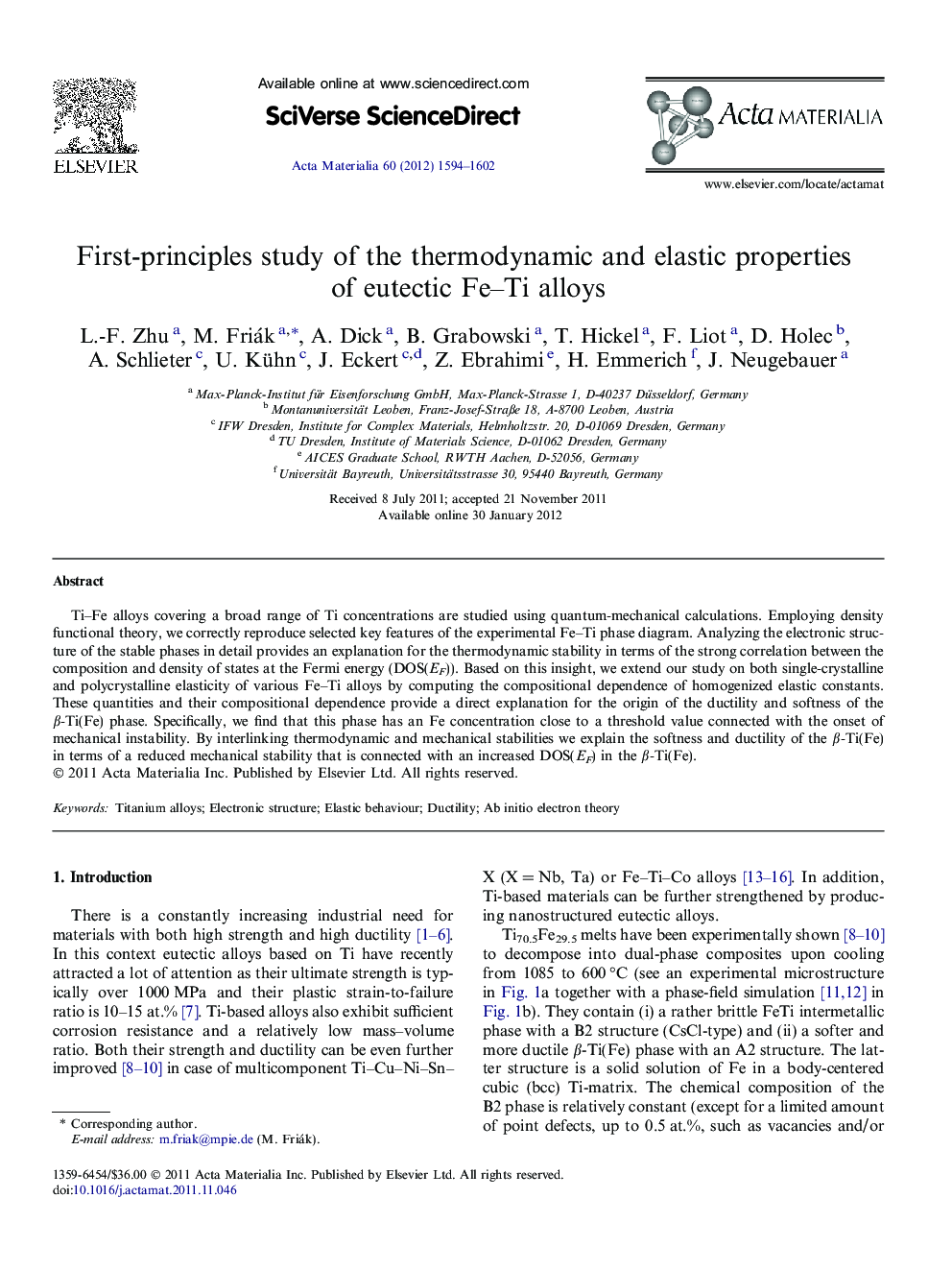| Article ID | Journal | Published Year | Pages | File Type |
|---|---|---|---|---|
| 1446817 | Acta Materialia | 2012 | 9 Pages |
Ti–Fe alloys covering a broad range of Ti concentrations are studied using quantum-mechanical calculations. Employing density functional theory, we correctly reproduce selected key features of the experimental Fe–Ti phase diagram. Analyzing the electronic structure of the stable phases in detail provides an explanation for the thermodynamic stability in terms of the strong correlation between the composition and density of states at the Fermi energy (DOS(EF)). Based on this insight, we extend our study on both single-crystalline and polycrystalline elasticity of various Fe–Ti alloys by computing the compositional dependence of homogenized elastic constants. These quantities and their compositional dependence provide a direct explanation for the origin of the ductility and softness of the β-Ti(Fe) phase. Specifically, we find that this phase has an Fe concentration close to a threshold value connected with the onset of mechanical instability. By interlinking thermodynamic and mechanical stabilities we explain the softness and ductility of the β-Ti(Fe) in terms of a reduced mechanical stability that is connected with an increased DOS(EF) in the β-Ti(Fe).
